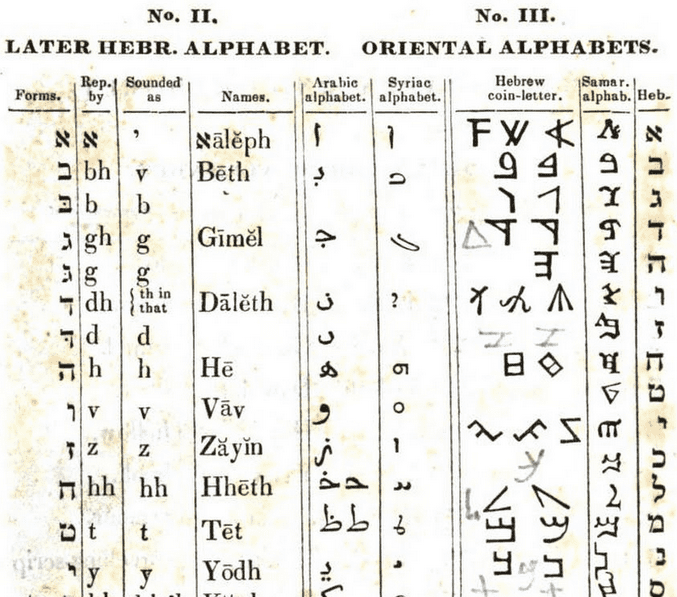Lehi’s famous dream and Nephi’s expanded version of the vision just became more meaningful, thanks to the insights offered by D. John Butler in his ebook, Plain and Precious Things: The Temple Religion of the Book of Mormon’s Visionary Men, available at Smashwords or Amazon for a pittance. In this short book written in a relatively light conversational style, Butler surprises the reader with a wealth of research about ancient Jewish temple concepts and the Day of Atonement ritual, giving a surprising new twist to the visions in First Nephi.
The book suggests that Jewish temple concepts are woven more deeply into the Book of Mormon than we have previously realized. In the most significant section, he presents a credible and intriguing case that Nephi is using Jewish imagery to describe a temple gone dark, representing the apostasy of the religious establishment of his day. He begins by explaining how the ancient Jewish temple had three sections. First is the ulam, often translated as “porch,” a room that may be roofless or very tall. Then comes the hekal, the main middle room. That word literally means “building” or “great building.” A high, lofting building. And then comes the debir, the holy of holies, representing the presence and power of the Lord.
Recall how Lehi begins his travel in a “dark and dreary wilderness” that joins a “large and spacious field, as if it had been a world” (1 Nephi 8:20). When I last read that verse a few months ago, I remember feeling jarred by the phrase “a world.” It just seemed odd and out of place. But Butler’s framework makes wonderful sense of it. The Hebrew word ulam for the first part of the temple is very close, almost identical in sound, to olam, the word that means “world.” In Butler’s view, there is a Hebrew play on words linking the great and spacious field, “a world,” to the Temple’s ulam. It’s one of many clues that we are on a Temple trip—but not the happy place of light and joy we normally associate with the Temple. In Lehi’s dream, it’s a temple gone dark. Dark and dreary, filled with wicked priests representing the corrupt religions establishment of his day.
After the ulam comes the hekal, the “great building.” Recall Lehi’s words of what he saw after the field/world/ulam:
a great and spacious building; and it stood as it were in the air, high above the earth.
And it was filled with people, both old and young, both male and female; and their manner of dress was exceedingly fine; and they were in the attitude of mocking and pointing their fingers towards those who had come at and were partaking of the fruit. (1Nephi 8:26-27)
The word “fine” is used repeatedly in the Old Testament to describe the clothing of the priests in the temple, not secular clothing. The people with the fine clothing in the great and spacious building include the priests of the temple in a sinister hekal, part of Lehi’s dark temple experience. Butler also compares the fumes of incense that are part of the hekal with the mists of darkness that lead people astray. The waters of life that are part of many temple scenarios in ancient literature are replaced with filthy waters that lead people astray.
Only those who resist the corrupt religious establishment of his day and the temptations and pressures of the adversary, clinging to the word of God (the iron rod) can make it past the dark ulam and sinister hekal and arrive safely to debir and the tree of life, rich in temple imagery also.
Butler argues that the Book of Mormon preserves a “loser’s eye view” of the religious controversies of 6th century B.C. Jerusalem. Nephi records in visionary form the two temple rites at the heart of the religion of his father, in 1 Nephi 8 and 1 Nephi 11-14. Understanding those vision-ordinances, according to Butler, gives us a key to understanding the rest of the Book of Mormon, and seeing that the entire book, from start to finish, is about the temple and the people who worshiped inside it. While I struggle with a few parts of his presentation, I am intrigued and have found several outstanding nuggets so far in his work.
There is much more in Butler’s delightful contribution, which reminds us that the Book of Mormon is more fascinating and more thoroughly ancient and Semitic that we may have realized. What a treasure that book is, filled with surprises and insights still being uncovered by those who dig.











Funny, I was just reading something very similar on the Feast Upon The Word blog:
Though I’m not aware of anyone having offered this interpretation, it seems more than obvious to me: the building in question is the Jerusalem temple. Jeremiah had for years, by this point, been profoundly criticizing the institution of the temple, in particular criticizing the blind faith the people had in it—their conviction that, because they had a temple, Babylon could never destroy the city. It would certainly be fitting that the temple would be filled with the wealthy, and that it was precisely the wealthy establishment who would spend their time mocking those who attain the tree. They mock those who claim to have seen through the veil without having been inside the temple, as they mock those who would leave Jerusalem for the desert to escape from a destruction decreed by “visionary men.”
Outstanding stuff. So why would the dream present a temple whose first two components have become corrupted, while the purity of the third remains intact? And does the "dark and dreary waste" (1 Nephi 8:7)–and the fact Lehi is stuck in it for hours–have parallel as well, or is that part of the ulam as well?
Hey, thanks, Jeff!
I'm working on a second book right now, exploring the same vein more deeply. I hope to have it out in October.
Rob, your questions are good ones. I talk about the darkness of the symbols of Lehi's dream in the book, and I actually talk about the "space of many hours" and "space of three hours" formulation in the follow-up, whose working title is The Goodness and the Mysteries.
Dave